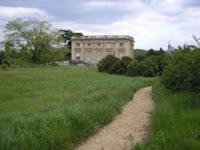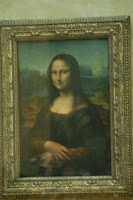
At this time of year, when we’re supposed to think about all we’re “thankful” for (like LOLRegencies and chocolate-cranberry truffles? Sequined party dresses and champagne? I’m definitely thankful for those…) I’m thankful for old favorite books to read, and the people who wrote them. And today is the 189th birthday of George Eliot, great writer and rebellious spirit!
 Mary Anne Evans was born the youngest of 5 children in 1819. Her father was the manager of the Arbury Hall estate belonging to the Newdigate family in Warwickshire, and she was born on that estate at a house called South Farm. Early on she showed signs of obvious intelligence, and was allowed access to the library at Arbury, where she was especially interested in the volumes on classical Greece. Eventually she was sent to boarding schools at Attleborough, Nuneaton, and Coventry, where she met the evangelical Maria Lewis, who became her great friend and correspondent (until Mary Anne decided to quit going to church…)
Mary Anne Evans was born the youngest of 5 children in 1819. Her father was the manager of the Arbury Hall estate belonging to the Newdigate family in Warwickshire, and she was born on that estate at a house called South Farm. Early on she showed signs of obvious intelligence, and was allowed access to the library at Arbury, where she was especially interested in the volumes on classical Greece. Eventually she was sent to boarding schools at Attleborough, Nuneaton, and Coventry, where she met the evangelical Maria Lewis, who became her great friend and correspondent (until Mary Anne decided to quit going to church…)
In 1836 her mother died and she returned home to keep house for her father, until her elder brother married and took over the house and she and her father moved to Coventry. The move brought her closer to new influences, including the wealthy Charles and Cara Bray, whose home at Rosehill was a haven for people of radical views and liberal theologies. It was there she made the decision to stop attending church, which caused a deep rift between herself and her family (her father threatened to kick her out, but didn’t follow through). When her father died in 1849, she traveled to Switzerland with the Brays and then stayed on in Geneva alone. On her return to England the next year, she moved to London alone with the intent of becoming a writer. (Oh no! A woman on her own, running loose in Victorian England!!!)
 In 1851 she met philosopher and critic George Henry Lewes, and by 1854 they were openly living together. Lewes was married, but he and his wife, Agnes Jervis, had agreed on an “open marriage”–in addition to the 3 children the Lewes’ had together, she also had several with other men. (Oh no! Shockers!!!) In 1854, Evans and Lewes went together to Berlin as a sort of “honeymoon”, where she called him her husband and started working on a series of essays that would eventually become Scenes of Clerical Life. She also came up with a new nom-de-plume–George Eliot.
In 1851 she met philosopher and critic George Henry Lewes, and by 1854 they were openly living together. Lewes was married, but he and his wife, Agnes Jervis, had agreed on an “open marriage”–in addition to the 3 children the Lewes’ had together, she also had several with other men. (Oh no! Shockers!!!) In 1854, Evans and Lewes went together to Berlin as a sort of “honeymoon”, where she called him her husband and started working on a series of essays that would eventually become Scenes of Clerical Life. She also came up with a new nom-de-plume–George Eliot.
In 1859, her first published novel, Adam Bede, made a big splash, and speculation as to the author’s identity ran rampant (there was even a “pretender” to the name, Joseph Liggins). In the end, she had to step forward and admit she was the author. The revelations of her private life shocked many of her readers, but it didn’t seem to affect sales. In 1867, the couple was even introduced to Princess Louise, daughter of Queen Victoria and a big fan.
Eliot continued to write well-received and popular novels for 15 years. After Adam Bede came The Mill on the Floss, dedicated “To my beloved husband, George Henry Lewes, I give this MS of my third books, written in the third year of our lives together.”
 Her last novel was Daniel Deronda, published in 1876, after which she and Lewes moved to Witley, Surrey, in hopes that the fresh air would help improve his failing health. He died in November 1878, and Eliot spent the next two years editing his final work, Life and Mind. But the scandal didn’t end with Lewes death. In May 1880, Eliot married an American banker named John Walter Cross, 20 years her junior.
Her last novel was Daniel Deronda, published in 1876, after which she and Lewes moved to Witley, Surrey, in hopes that the fresh air would help improve his failing health. He died in November 1878, and Eliot spent the next two years editing his final work, Life and Mind. But the scandal didn’t end with Lewes death. In May 1880, Eliot married an American banker named John Walter Cross, 20 years her junior.
 Cross was not the most stable of characters. On their honeymoon in Venice, he either jumped or fell from their hotel window into the Grand Canal (yuck!), and there were quarrels. That didn’t last long, as Eliot died soon after their return to their new house in Chelsea, on December 22, 1880, at the age of 61. The possibility of burial at Westminster Abbey was vetoed due to her naughty life (refusing to go to church, shacking up with Lewes, etc), and she was buried next to Lewes in Highgate Cemetery. In 1980, 100 years after her death, a memorial plaque was erected at Westminster’s Poet’s Corner.
Cross was not the most stable of characters. On their honeymoon in Venice, he either jumped or fell from their hotel window into the Grand Canal (yuck!), and there were quarrels. That didn’t last long, as Eliot died soon after their return to their new house in Chelsea, on December 22, 1880, at the age of 61. The possibility of burial at Westminster Abbey was vetoed due to her naughty life (refusing to go to church, shacking up with Lewes, etc), and she was buried next to Lewes in Highgate Cemetery. In 1980, 100 years after her death, a memorial plaque was erected at Westminster’s Poet’s Corner.
Some of her other works include Silas Marner and Romola, set in 15th century Florence, but my personal favorite of her books (and one of my favorites of all time) is Middlemarch, her 7th and next-to-last work, published first in serial form between 1871-72. It’s a big book, with multiple plots, a huge cast of characters, and many underlying themes such as the status of women in society, the nature of marriage, religion/hypocrisy, political and educational reform, and idealism vs self-interest (themes that never lose their immediacy, especially if one looks at this year’s election!). It’s also a great story. Virginia Woolf called it “the magnificent book, with all its imperfections, is one of the few English novels written for grown-up people.”
 Middlemarch was a Masterpiece Theater series in 1994, starring Juliet Aubrey and Rufus Sewell, and I have seen rumors of an upcoming feature film, written by Andrew Davies and directed by Sam Mendes, though I haven’t seen any casting news. Maybe Mendes’ wife, Kate Winslet? It’s hard to picture her falling for Casaubon’s BS, though.
Middlemarch was a Masterpiece Theater series in 1994, starring Juliet Aubrey and Rufus Sewell, and I have seen rumors of an upcoming feature film, written by Andrew Davies and directed by Sam Mendes, though I haven’t seen any casting news. Maybe Mendes’ wife, Kate Winslet? It’s hard to picture her falling for Casaubon’s BS, though.
A few sources I like (and used for this post) are: Jenny Uglow, George Eliot. Kathryn Hughes, George Eliot: The Last Victorian. Sandra Gilbert and Susan Gubar, The Madwoman in the Attic: The Woman Writer and the 19th Century Literary Imagination. Jerome Beaty, Middlemarch from Notebook to Novel: A Study of George Eliot’s Creative Method.
Do you enjoy George Eliot? What are your favorites of her books/the film adaptations of them? (There was good one not too long ago of Daniel Deronda). What books are you especially grateful for this holiday season??? (I think I’m going to curl up with Middlemarch this evening…)


















